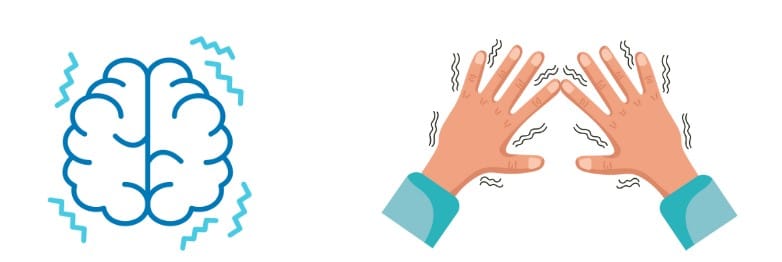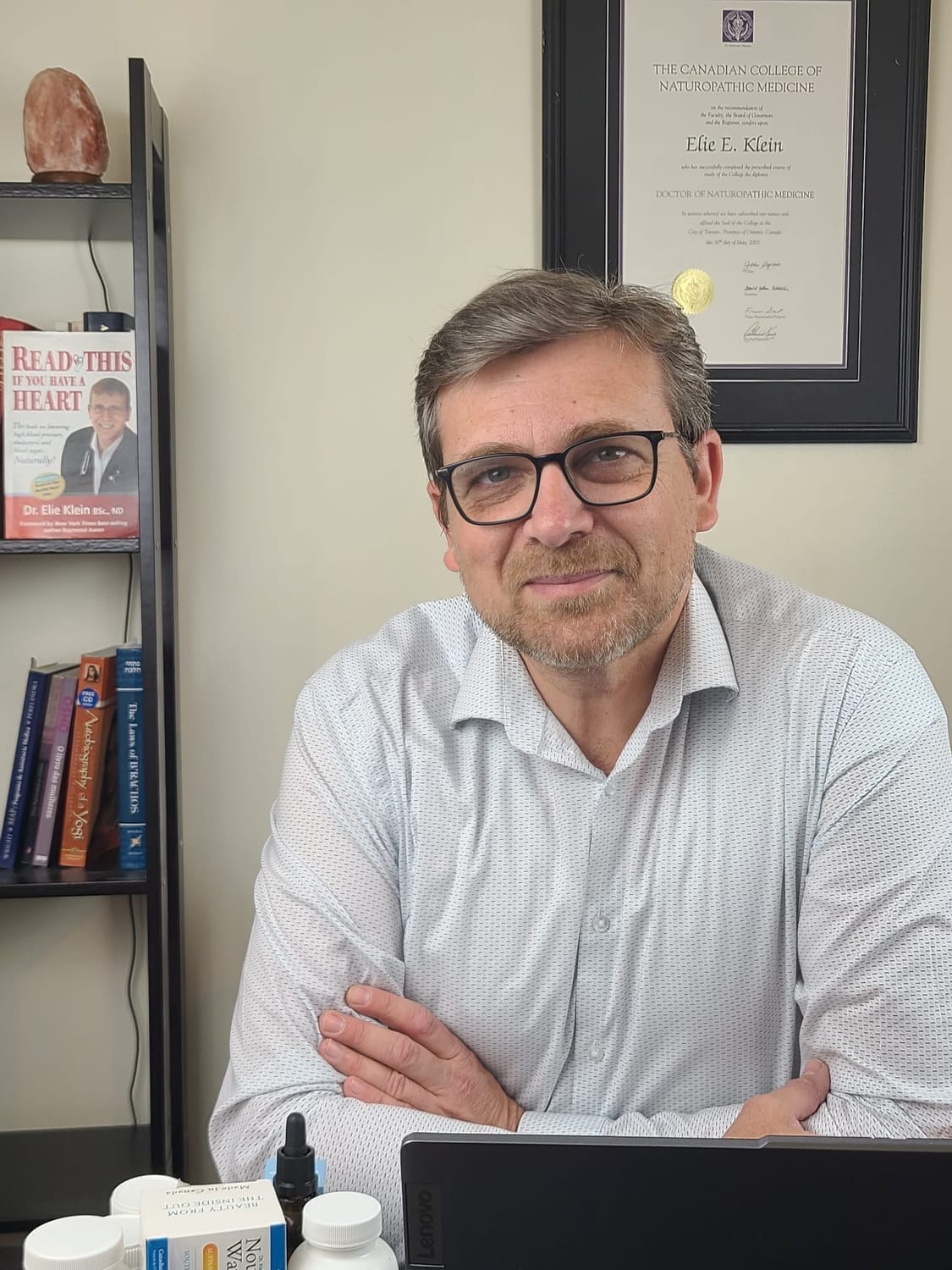Parkinson’s – It Takes a Lot of Energy to Be Still
This article explains a practical, natural perspective: supporting energy production in brain and nerve cells while lowering stress load (in those cells) may help some people feel and function better—alongside their doctor’s care.
A Familiar Problem, Told Simply
Three common experiences:
“The meds help, but the tremor still shows up when I’m tired or stressed.”
“I’ve tried many small tweaks, but nothing seems to change much.”
“I just want steady hands and a clearer mind.”

In my naturopathic practice, I’ve seen that when people lower stress hormones and support cellular energy, tremors and stiffness sometimes become easier to manage.
Who’s writing this—and why listen?
I’m Dr. Elie Klein, ND. I’ve practiced naturopathic medicine for 23 years. I’m not a neurologist, and Parkinson’s is complex. Still, two thirds of those I have advised, using a simple, natural plan reported meaningful tremor reduction—not a cure, but real-life improvement worth sharing.

My approach to Parkinson’s was inspired by observing the effects of two natural substances on people with Parkinson’s or Parkinson’s-like tremors.
I came across the work of the late Italian physician Dr. Antonio Costantini, who successfully used vitamin B1 (thiamine) therapy in Parkinson’s. I also noticed, early on, the tremor-reducing effect of Rhodiola rosea, a subarctic medicinal plant I often recommend to help reduce the body’s stress response.
These observations point to an idea many overlook: it takes energy to be still.
The big idea: Parkinson’s and cell energy
Parkinson’s is commonly explained as a loss of dopamine-producing neurons, which is why L-Dopa and related drugs are used. That model is useful—but it is not the whole story.
When the brain’s cells struggle to make enough energy from the nutrients they get, movement control can suffer. Consider how a very hungry person might feel a temporary shakiness—a mild version of an energy shortage. In Parkinson’s, energy challenges of “starved” cells may be chronic, so tremors and slowness can persist.
Key takeaway:
Alongside medical care, it may help to lower stress load and support cellular energy so neurons can do their job.
Energy “thieves” that may cause or contribute to Parkinson’s
A person’s lifestyle, diet, work environment and habits, long before Parkinson’s began, may have had hidden energy “thieves”, “poisons” of sorts, or deficiencies, that could contribute to the condition. These include:
Stress physiology on “high.” Chronic stress hormones can sap cellular energy.
Nutrient gaps. Vitamins and minerals support energy enzymes in the brain.
Oxidative stress. Wear-and-tear on mitochondria (the cell’s powerhouses).
Dietary patterns. Certain processed fats and foods can increase inflammation.
Gut-derived toxins (endotoxin). An imbalanced microbiome can increase the body’s burden.
Environmental exposures. Pesticides or heavy metals can add stress to cells.
Medications whose side effects can be tremors or Parkinson’s, such as antidepressants, contortionists, certain blood pressure meds and others.
When these “energy thieves” stack up, even good treatments may feel underwhelming.

A Simple, Supportive Framework
Goal: Lower stress signals and improve the brain’s ability to turn food into energy.
1. Lower the stress load
(make energy easier to produce)
Rhodiola rosea (adaptogen): traditionally used to reduce stress response and support resilience.
Gentle breathing practices, light movement, time outdoors, and consistent sleep can dial down the “always on” signal.
2. Support the biochemical energy pathways
Vitamin B1 (thiamine) supports enzymes that convert glucose (the brain’s preferred fuel) into usable energy.
Ensure broader B-vitamin sufficiency (B6, B12, folate) and minerals like magnesium, zinc, and selenium, as advised by a clinician.
Vitamin D repletion if low.
3. Reduce “energy thieves”
Shift away from seed-oil heavy processed foods (snacks, industrial baked goods, many restaurant sauces).
Address gut health (reduce endotoxin load) with fiber variety, targeted probiotics, or clinician-guided strategies.
Review environmental exposures where reasonable (e.g., gardening pesticides).
4. Keep medications central
This framework is adjunctive—coordinate with your neurologist. Some medications can cause tremor or Parkinsonism; your doctor can review and adjust when appropriate.
Always discuss supplements and changes with your medical team, especially if you’re on prescription drugs.
Two natural tools people ask about
Rhodiola rosea
Known for moderating the stress response.
A calmer stress system often means better daytime energy and, for some, steadier hands.
Not a cure; think of it as helping remove a “brake” on energy.
Consider Rhoziva, a reliable Rhodiola supplement from plants cultivated in Canada (declaimer: I co-formulated it and work with the brand).
Vitamin B1 (Thiamine)
A key cofactor in glucose-to-energy conversion in brain cells.
Clinicians (e.g., Dr. Costantini) have used high-dose thiamine successfully in Parkinson’s.
Forms and doses vary—work with a clinician to choose an approach that fits your history, meds, and labs.
What success can look like
Small wins first: fewer “off” moments when tired or stressed.
Energy steadiness: better mornings, less afternoon dip.
Function focus: easier everyday tasks, steadier utensils, calmer voice.
Time horizon: improvements—when they occur—are often gradual and layered.
Not everyone responds the same way. That’s why a personalized plan, coordinated with your physician, matters.
Frequently Asked Questions
Is this a cure for Parkinson’s?
Not officially. Parkinson’s is complex. These strategies are supportive—they aim to improve comfort and function, not replace medical care. But with the right support there can be substantial improvement.
Can I try Rhodiola or B1 on my own?
Some do. They are readily available over-the-counter. It is safer is to consult a clinician who understands your meds, history, and potential interactions.
How long until I notice anything?
If helpful, people sometimes notice subtle changes in weeks, with steadier improvements over months.
What if I’ve tried “everything”?
Often, the difference is sequence and fit—which stressors to remove first, which nutrients to prioritize, and how to respect your current meds and labs.
If you’d like personalized guidance
If this perspective resonates, I offer a complimentary 10–15 minute “get to know you” call.
We’ll discuss your main concerns and current treatments.
I’ll share whether I believe my approach could complement your care.
No pressure—just clarity on next steps.
Reasonable, transparent fees if we decide to continue. The goal is access—not burden.
You can reach out here www.drkleinhealth.com
Final thought
Being still truly takes energy. If we make it easier for brain cells to produce that energy—by easing stress signals, correcting nutrient gaps, and lightening the load on mitochondria—we may create better conditions for steadier days. That’s a path worth exploring, step by step, with a medical team you trust.



